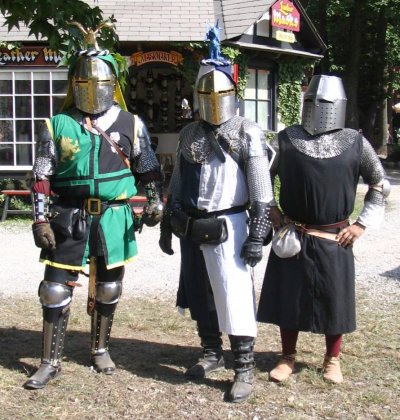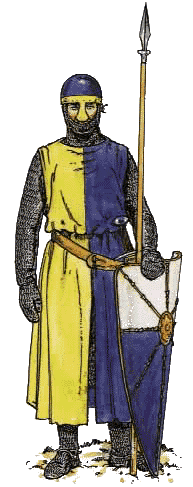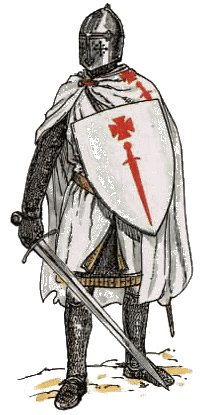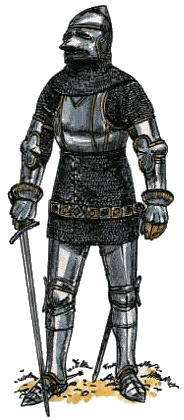|
Making a Kit
 |
| Sirs Brian, Edward, and Wolf |
|
There are many different reasons to want to make a knightly kit, whether it is
historical interest, activity in a re-enactment group, costuming for a renaissance
or medieval faire, or a play or charitable event. Whatever your goal is, there
are as many different ways to make a kit as there are enthusiasts who do so. You
can choose between a variety of styles that span a multitude of centuries and
geographical regions.
The choices can seem daunting, not to mention the potential expense involved.
But getting started can be quite cheap and easy, if you're willing to pick the
style of knight accordingly.
For example, to make a relatively inexpensive kit, you can portray an early
medieval knight, such as a Norman or Crusader knight. The armor generally consisted
of a mail (the term "chainmail" is technically not correct) hauberk or byrnie, which
covers the torso, and hangs to mid-thigh or around the knee. These may have had
half-sleeves or full length sleeves ending in mittens. A mail coif covered the
head, which depending on the time and place, may have been integrated into the
hauberk or as a stand-alone piece. With a fabric surcoat, and a nasal/conical
helm, the look is basically complete.
For later periods involving plate armor, the expense increases dramatically, however
there are many options available. You can visit our Links Page
for some examples of armourers.
Some examples of styles and periods:
 |
| Norman Knight C. 1066 |
|
 |
| Norman Knight C. 1180 |
|
 |
| Teutonic Knight C. 1270 |
|
 |
| Italian Knight C. 1400 |
|
 |
| Italian Knight C. 1425 |
|
 |
| German Knight C. 1470-80 |
|
|